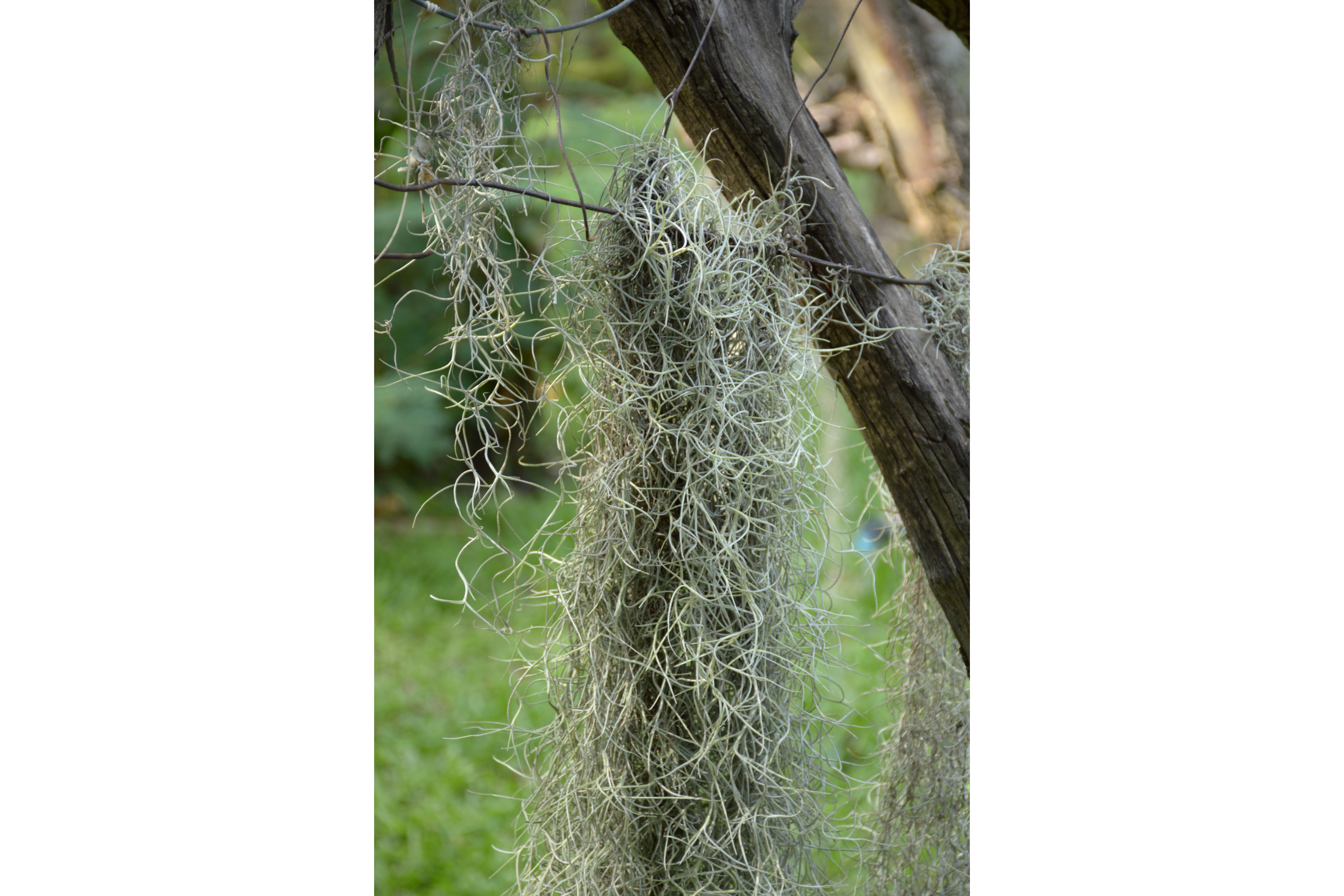Spanish moss
(Tillandsia usneoides)

Description
Spanish moss (Tillandsia usneoides) is an epiphytic flowering plant that often grows upon large trees in tropical and subtropical climates. It is native to much of Mexico, Bermuda, the Bahamas, Central America, South America, the Southern United States, and West Indies. It has been naturalized in Queensland (Australia). It is known as grandpa's beard in French Polynesia. Most known in the United States, it commonly is found on the southern live oak (Quercus virginiana) and bald cypress (Taxodium distichum) in the lowlands, swamps, and marshes of the mid-Atlantic and southeastern states, from the coast of southeastern Virginia to Florida and west to southern Arkansas and Texas. The specific name of the plant, usneoides, means "resembling Usnea", a lichen. While it superficially resembles its namesake, it is neither a lichen such as Usnea nor a moss, and it is not native to Spain. It is a flowering plant (angiosperm) in the family Bromeliaceae (the bromeliads) that grows hanging from tree branches in full sun through partial shade. Formerly, it was placed in the genera Anoplophytum, Caraguata, and Renealmia. The northern limit of its natural range is Northampton County, Virginia, with colonial-era reports of it in southern Maryland where no populations are now known to exist. Its primary range is in the southeastern United States (including Puerto Rico and the U.S. Virgin Islands) through Argentina, where the climate is warm enough and a relatively high average humidity occurs. It has been introduced to locations around the world with similar conditions, including Hawaii and Australia. Spanish moss consists of one or more slender stems, bearing alternate thin, curved or curly, and heavily scaled leaves 2–6 cm (0.8–2.4 inches) long and 1 mm (0.04 inches) broad, that grow vegetatively in a chain-like fashion (pendant), forming hanging structures of up to 6 m (20 feet). The plant has no roots, and its brown, green, yellow, or grey flowers are tiny and inconspicuous. It propagates both by seed and vegetatively by fragments that are carried on the wind and stick to tree limbs or, that are carried to other locations by birds as nesting material. Spanish moss is not parasitic, it is an epiphyte that absorbs nutrients and water through its own leaves from the air and rain falling upon it. While its presence rarely kills the trees on which it grows, it occasionally becomes so thick that, by shading the leaves of the tree, it slows the growth rate of the tree.
Taxonomic tree:







